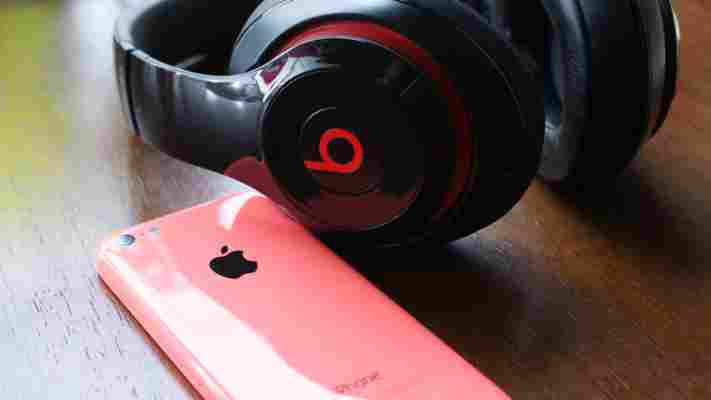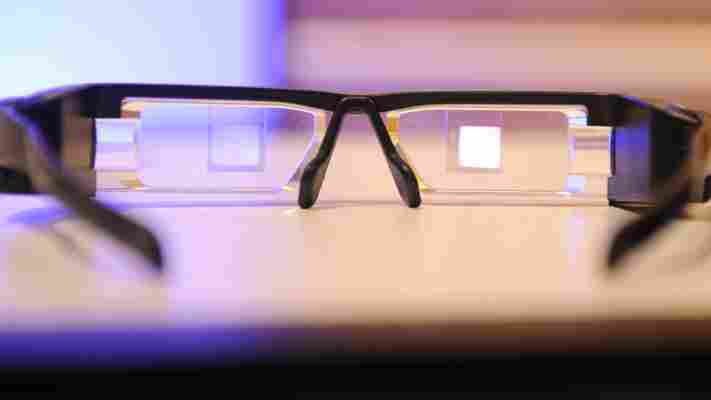No better time to sue than after a multi-billion dollar sale has been settled, right? USA Today reports that Monster is suing Beats, saying that the technology behind the headphones was stolen.

According to the report, Monster claims that the Beats co-founders Iovine and Dre deliberately hid Monster’s involvement in designing and engineering its headphones, as well as the education the company provided for engineering, manufacturing, distribution and the actual sale of the headphones.
Monster CEO Noel Lee says that he and Monster invented the technology found in Beats By Dr. Dre headphones and that the technology was “pirated” away from the company. Convenient that Monster waited until now to assert this claim.
Beats and Monster worked closely together until 2012, when the companies walked away from contract negotiations that turned sour. HTC also invested $300 million in the company before the founders purchased the entire Beats company back in 2013.
➤ Tech firm Monster sues Beats and founders Dre and Iovine [USA Today]
Barnes and Noble drops the price of Nook HD, Nook HD+ tablets in the UK yet again

Barnes and Noble has slashed the cost of its Nook HD and Nook HD+ tablets once again in a bid to clear the decks.
The retailer announced today that the 7-inch, 8GB Nook HD now costs just £79 (previously cut to £99) while a 16GB unit costs £99 (previously £129).
Similarly, it has also dropped the price of its 9-inch Nook HD+ to £129 (previously £149) for the 16GB model and to £149 (previously £179) for the 32GB version.
In June, the company said it would stop manufacturing its own tablets , but would instead create a partnership model for future devices.
➤ Barnes & Noble Announces Amazing New Low Prices for Award-Winning NOOK HD and NOOK HD+ Tablets in the UK [Market Watch Press Release]
Featured Image Credit: Scott Olson/Getty Images
How augmented reality is augmenting its own future
People have been talking augmented reality (AR) for years. In fact, since L. Frank Baum’s The Master Key: An Electrical Fairytale was published in 1901.

In it he described how someone wearing a pair of glasses would be able to see whether the person they are talking to is good or evil, wise or foolish, kind or cruel:
Fast-forward 100 years, give or take, to the year 2000 and you have ARQuake [PDF], an augmented reality version of the game Quake created in the Wearable Computer Lab , a part of the computer and information science department [PDF] at the University of South Australia.
Now, we might not be quite at the stage of being able to determine whether someone is truly good or evil using augmented reality, or indeed playing Quake in the streets, but the idea of being able to look at someone, or something, and find out additional information by looking through a smartphone or tablet is becoming more common.
However, with all the talk of AR, I’ve found the reality disappointing. With companies like Blippar , it’s currently most often used for marketing and advertising, and while I might appreciate being able to see your latest ad come to life on my magazine pages, I was ultimately hoping for something a little more exciting from the future.
Part of the problem, as I see it, is that the term is so broad and the possibilities so varied that it creates no area of focus, and no clear understanding from users or businesses.
In pursuit of having my faith restored, I caught up with notable businesses in the space, such as Layar , Taggar , Metaio and InfinityAR to see what the future had to hold through their eyes. Here are just a few of the current and near-term possibilities for augmented reality.
Stickiness is the term used to define how successful a company or a service is at getting a user to return in future. In publishing, sticky content means repeat readers. In the context of apps and augmented reality, it means the need to convince people to open the app more than once or twice. Augmented reality might have been mooted for a long while, but its key problem today is the same as when Wikitude launched for Android back in 2008 – it’s still mostly gimmicks.
One company looking to get around this problem is Taggar , launched in December for iOS, which thinks that the answer to the stickiness problem lies in social integration and cloud hosting of content. The former should ensure word spreads about the service and adds a level of interaction, while the cloud base removes the need for on-device processing, freeing it up for access from virtually any device, potentially.
What this means for users of the Taggar app is that they can ‘tag’ any real-world object with pictures, images or videos. Other people can then come along and leave a response, or ‘tag over’ the original tag.
So far, the company has worked with brands on creating campaigns, like for the Jason Durulo album cover which will allow fans to leave tags that will be automatically ranked by ‘likes’. At the end of, say, two months (it’s currently undetermined), the fan with the most liked tag will win a prize, like seeing him in concert. It’s definitely a step beyond the standard, point-and-watch-a-movie-trailer uses we’ve seen from AR in the past, and the idea of having multiple tags on the same content hasn’t really been seen too many times before, but so far, so promo.
However, Charlotte Golunski, head of marketing for Taggar, said that there are plenty of other uses for it too:
While you could take that review scenario to apply to anything from artwork to restaurants, it’s also being used in more creative ways too, Golunski explained.
One blogger took a photograph and then used it to show all the other photographs he took of the same place from different angles, and to create a making-of video to show what went into taking the photo. Other bloggers then came along and tagged the image with shots of the same place but taken at a different time or in different weather conditions, Gorlunski said:
Clearly, ‘secret’ tags could also be used for things like creating a hidden guided tour around a city, or to create a treasure hunt of some kind, maybe even a creative marriage proposal. Gorlunski explains that people in their twenties and thirties have been using it for, ahem, adult content too.
This content can be updated – or deleted – at will, she added. However, it’s probably best to make sure it’s only a picture that you both have – while the tags are called secret, they are in fact all public. Next month, Taggar will be releasing an update that introduces the option to have private secret tags.
While Taggar already seems to offer a more compelling reason to use it than many others, it starts to make a lot more sense when you think about removing the smartphone from the equation. I can’t imagine constantly pulling my phone out of my pocket just to check if there are any secret tags in my surrounding world, but transpose it onto something like Google Glass where you’d never have to make the effort to discover the tags and interact with the content and I’m much more likely to use and engage with it.
The app only exists on iOS today, but the team is at work on versions for Android and Glass already, though it’s still early days on the latter. At the demo, I saw nutritional information pop out from a packet of popcorn simply by looking at it – combine this with something like Fitbit and you have an instant nutritional adviser telling you whether you’re okay to go ahead and treat yourself today or whether, actually, you’ve been treating yourself a bit too much lately and it might be better to pop it back on the shelf.
The next version of the app for Glass-like devices would use a full overlay display to place content directly over the real-world, rather than using the top-corner display afforded by current generation Glass.
Layar is one of the best known and most downloaded (36 million downloads and counting) augmented reality browsers for smartphones. With it you can overlay your view of the real world with points-of-interest, Instagram photos and all sorts of other ‘Layars’ of information and content. The company also works with publishers to create interactive content for magazines, websites, promotions and that sort of thing. While it’s quite clearly applicable for publishers to deliver extra value – and that’s where the company is most successful – Layar also works with the automotive, real estate and education sectors too.
“Augmented reality as a term is pretty tough right now, not everybody understands it and those that do expect a lot from it and it doesn’t always deliver, because it’s hyped so much,” Maarten Lens-FitzGerald, co-founder of Layar explained.
As one of the longer standing businesses, Layar has seen a lot of changes since it began back in 2009. And frustrating early user-experience for AR aside, 36 million downloads shows some appetite for the technology from consumers, in addition to the company’s 70,000 B2B users. But what’s Lens-FitzGerald and the company looking ahead at now?
Ultimately, it’s about balancing the removal of technology (to make the experience more seamless) with what’s possible and genuinely useful for users.
“It’s about the context the user is in, and that is something that we, brought up on TV mass media, are not used to. We’re used to being fed all the content automatically… and now all of a sudden the content will only become available if I’m in the right context,” Lens-FitzGerald added.
Layar may well be focusing on delivering interactive, contextual published content, but Isreali startup Infinity AR is working on bringing the idea of context together with augmented reality to essentially create a cheat sheet for life.
Infinity AR’s core proposition is a software platform designed to connect all manner of devices. However, rather than just plug everything together in the most basic of ways, it includes things like facial, voice and mood recognition – the latter two of which are powered through integration with Beyond Verbal’s Moodies ’emotion engine’ . By combining information from different sources, it can present you with timely, context-relevant information, like whether you need to fill up your gas tank before you even set foot outside. Enon Landenberg, CEO of Infinity AR explained:
Achieving this is no mean feat, but even mapping all the different types of information that could be gathered is only half of the story – devices have a key role in the equation. Landenberg explained that the company then divided each device into inputs and outputs, so your smartphone would be an input (microphone, GPS, etc) and an output device (screen, speaker), a smart TV – or even your car – could be both input and output devices. Conversely, your Nike FuelBand can only be an input device as it lacks a screen.
In another scenario, Landenberg painted a picture of sitting in front of your TV at home and being informed via your smartphone that you have a meeting in the morning and that you don’t have enough fuel to reach your destination, so the alarm on your phone has been moved forward by 15 minutes to give you enough time to get to the nearest petrol station.
Take a look for yourself at what Inifinity AR is trying to achieve in the concept video below. It’s at this point that I can’t help but think of L Frank Baum’s ‘Character Marker’ glasses again. It’s pretty impressive, and perhaps concerning, stuff.
Landenberg argues, however, that the onus of responsibility is for people to properly understand what they’re publicly sharing, and points out that most people have far more pictures on social media channels than the government currently officially holds about them.
It’s not a potential privacy backlash that’s holding back some of the most exciting potential uses for AR, it’s partially down to the hardware, Landenberg says:
Nonetheless, Landenberg’s not worried about that right now as he thinks the rapid pace of technological evolution will make up for any potential deficits we have right now. Plus, Google’s not the only company working on smart glasses, he also sings the praises of Meta’s SpaceGlasses that have been designed for a full AR experience.
Vuzix is another company that’s been working hard to bring the potential of augmented reality to life through development of hardware and software .
Other companies, like Metaio , have been working hand-in-hand to try and solve the hardware challenges facing AR today, but without building its own devices. Metaio’s Trak Lord explained a little more:
Out of this research, the company has designed an accelerator that it calls ‘the AR engine’ that would (ideally) go into any SoC (eg. Apple’s A7 chip found in the iPhone 5s) to increase initialization (boot time) and decrease battery consumption. Lord said in initial tests on a regular mobile silicon system, that kind of accelerator can reduce power consumption by more than 60 percent and increase initialization by “about 6,000 percent”.
Much of Metaio’s work is undertaken in partnerships with companies and brands. In the second half of last year, the company went about creating an augmented reality servicing and diagnostics manual for the Volkswagen’s XL1 concept car . Lord explained that the idea behind something like this is that, as a national dealer, Volkswagen needs to be able to fix this very specialist car at any of its dealerships, but training all the technicians how to fix it when the chances are they’d never see one would be a bit of a waste.
Augmented reality has potential in a lot of industries in this way, and is already being put to productive use in prototyping, product design, precision and efficiency measurements. Essentially anything where you can take a virtual asset that would be impossible or just plain impractical to conjure up or transport in real life, like large industrial components.
With augmented reality able to deliver information and instructions in a hands-free manner, is there potential for it in surgery? Not for Metaio, at least not now, Lord explained.
It’s through businesses, institutions and companies embracing AR for things like training, education and maintenance tasks where Lord thinks that AR might gradually be able to make its way into the mainstream, non-tech audiences. Although he thinks we’re not at a point where every day consumers are ready to be walking around with AR glasses.
We’ve seen the possibilities of secret messages, hidden virtual guided tours around a city, and the possibility of a future where any of your devices will be able to deliver context-relevant, timely information, perhaps before you even knew you needed it.
It’s undeniable, a lot of the uses we’ve seen for augmented reality so far have been gimmicky, but it feels like with other technology maturing around it (batteries, precision of GPS, processing power in a range of devices, etc.), it’s now at a point where we’re beginning to see some of the true early potential.
It might not quite be ‘augmented reality’ in the same way as some of the other uses covered here, but Orcam’s system for people with severe sight difficulties looks like it could change people’s lives. By using glasses equipped with a small camera, object-recognition technology, gesture recognition, a whole bunch of processing and a bone-conduction earpiece, it can allow someone who is visually impaired to navigate the world with relative ease. It might not fit quite so neatly match the term AR as we’ve become accustomed to, but it’s certainly augmenting the reality of its users – the output in this case just happens to be audible rather than visual.
The potential of augmented reality represents different things for different users. For consumers, it could one day be the ultimate in convenience – delivering information on everything you could ever want to know about people, places, objects, politics (RedEdge is already working on its Augmented Advocacy app for Glass ) and anything else right in front of your eyes, on your wrist, or via any other kind of device. For manufacturing or heavy industries, it’s like the ultimate dry-run. For publishers and marketeers, it’s an opportunity to engage with their target audience beyond the page. And for people that can barely see, it’s a chance to experience the world in ways they haven’t had the chance to before.
With applications of the technology now diversifying in many different directions, it’s clear that AR as an industry is making no bones about augmenting its own future.
Featured Image Credit – Robyn Beck/AFP/Getty Images
